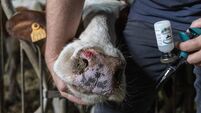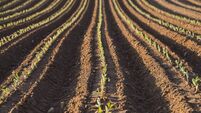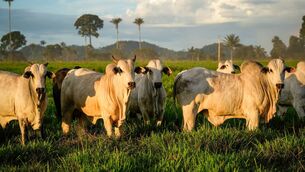Dairy and pig prospects look better

Insatiable demand from China for pigmeat has lifted EU prices 10% in a month.
And IFA sources have said a second successive GDT dairy auction price rise, and persistent if modest firming in EU commodity prices, suggest that the worst of the two-year dairy slump may have passed.
IFA sources also welcomed the second extension of the intervention ceiling for skim milk powder, to 350,000 tonnes.
They said a continuation of the trend in May would suggest the new intervention ceiling could be full by mid-July; but there was a real possibility that improving SMP prices at EU and global levels would slow down, if not stop, the inflow into intervention.
“The stock overhang is not a massive concern, as the EU Commission has a reasonable record of selling intervention stock prudently when markets recover, and at a profit,” according to the IFA Dairy Market Blog.
IFA also pointed to research by Louis Dreyfus, one of the world’s largest commodity trading companies, presented at an FCStone conference in Dublin, suggesting that commercial dairy stocks around the world were being consumed and were tightening, and a pickup in demand could be expected.
But price recovery would take time to translate back into higher milk prices, because EU commodity quotes had fallen by 40% (butter) to 50% (SMP) since their 2014 peaks.
However, Friesland Campina, one of the world’s largest dairy co-ops, has held its June milk price, and will increase the sales price of their cheeses.
According to the company, which has over 19,000 member dairy farmers in the Netherlands, Germany and Belgium, demand for dairy products is stable.
Dairy optimists are also encouraged by higher cow culls in Germany and France, and significant production cuts in the UK.
A representative of Louis Dreyfus predicted output may even fall back, by as much as 1.6% over the second half of the year. Recent floods in the UK, Germany and France could have extra consequences for milk deliveries, due to their effect on fodder production, coming on top of bad spring weather in the regions of northwest Europe producing milk off grass.
EU commodity prices have been firming up in recent weeks, estimated by IFA to be worth just under 1c/l extra in gross returns for an Irish product mix, to just over 26c/l (before processing costs and VAT).
Meanwhile, big farms which produce two-thirds of the milk in California are estimated by Rabobank to now be losing at least $2/cwt on average, which will force them to reduce herd sizes and reduce inputs.
Rabobank predicts a 3% milk production fall this year in California, the state which supplies 40% of U.S. dairy exports, and continuing loss-making for most of the state’s dairy farmers through the first half of 2017.
Rabobank believes this is part of a global milk market rebalancing already in motion, which will bring a recovery in global prices towards the end of the year and into 2017 — or sooner if there is an unanticipated supply-side shock or increase in demand.
However, the acid test for signs of recovery in dairy markets as far as Irish farmers are concerned will come over the next week as their co-ops set milk prices for May, a vital month for prices because of current peak or near peak yields.
When prices were set for April, Ireland’s Glanbia was the milk buyer of 15 (including Dairygold and Kerry) in the www.milkprices.nl comparison not to cut their milk price.












